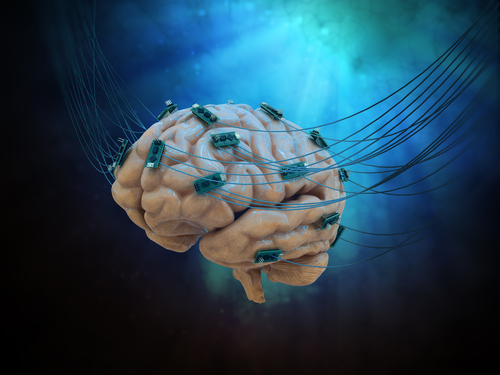Personalized Brain Maps May Help Improve Deep Brain Stimulation for Parkinson’s, Other Conditions

Not everyone’s brain connections map at exactly the same location, which may explain why deep brain stimulation (DBS) therapy, used for severe cases of Parkinson’s and other neurological conditions, works for some patients and not for others, a study has found.
The findings,”Integrative and Network-Specific Connectivity of the Basal Ganglia and Thalamus Defined in Individuals,” could improve DBS treatment for Parkinson’s patients, by helping doctors choose where in the brain to implant electrodes based on each patient’s own brain maps. The research was published in the journal Neuron.
DBS — a surgical procedure in which electric stimulators are placed at target regions inside the brain — may be used to relieve motor symptoms in some people with Parkinson’s, who have had the disease for at least four years and whose motor symptoms cannot be fully controlled by medication.
It usually works best to ease stiffness, slowness, and tremor, and not as well for imbalance, sudden inability to move when walking, or non-motor symptoms.
For other neurological conditions, DBS can be used to ease cognitive symptoms such as obsessive thoughts and compulsive behaviors.
However, this method is not effective for all patients. In the case of Parkinson’s, it can be transformative for some, but for others, it causes side effects that outweigh the benefits, including worsened thinking or memory problems.
“Deep-brain stimulation is a very invasive treatment that is only done for difficult, severe cases,” one of the study’s leaders, Deanna Greene, PhD, a professor at Washington University School of Medicine in St. Louis, Illinois, (WUSTL) said in a press release.
“So it is difficult to grapple with the fact that such an invasive treatment may only help half the people half the time,” Green said.
She and her colleagues mapped specific circuits in the brain using magnetic resonance imaging (MRI) and found that each person’s brain networks position a bit differently. This may help explain why the effects of DBS vary so much from person to person and point to a potential way of improving the treatment.
It all started when a group of scientists from Washington University scanned themselves at night as part of the so-called Midnight Scan Club.
From the brain scans of 10 healthy individuals, researchers created three-dimensional maps of the functional networks running through structures located deep inside the brain, which usually are targeted by DBS and known as the thalamus and the basal ganglia.
Both these regions have been linked to neurological and psychiatric conditions, but so far the precise mapping of its activity has been challenging technically.
Researchers discovered that the distinct networks that control vision, movement, attention, goal-directed behaviors, or the brain’s default state at rest, mingle and share information at nine hubs inside the basal ganglia and thalamus.
Importantly, they saw that each person’s functional networks can be positioned a bit differently, so when DBS electrodes are placed in the same anatomical spot they may influence different functions in different people.
Some networks and their connecting spots — such as the motor integration zone, where the control of movement and goal-directed behavior share paths — maintained pretty much the same location in all people. Of note, these regions corresponded to “consistently successful sites of deep brain stimulation,” the researchers wrote.
“I showed a neurosurgeon where we’d found the motor integration zone, and he said, ‘Oh, that’s where we put the electrodes for essential tremor, and it always works,'” said the study’s senior author, Nico Dosenbach, MD, PhD, and a professor at WUSTL.
Conversely, other networks and intersection points — some targeted to treat Parkinson’s disease — varied significantly more from person to person.
“We saw that there was a great deal of variation across people in terms of what functional networks are represented there, and deep-brain stimulation is only about 40% to 50% successful there,” Dosenbach said.
The team is now exploring ways of using each person’s brain map to personalize the best regions to target to provide relief while avoiding side effects. They also want to look for other brain spots that might provide even better results.
“What this study suggests is that a particular patient may do better if the wire is placed in relation to their personal functional brain map rather than in context of the population average. A personalized functional map — as opposed to an anatomical map, which is what we use today — could help us place a wire in the exact place that would provide the patient with the most benefit,” said study co-author Scott Norris, MD, professor at WUSTL.






